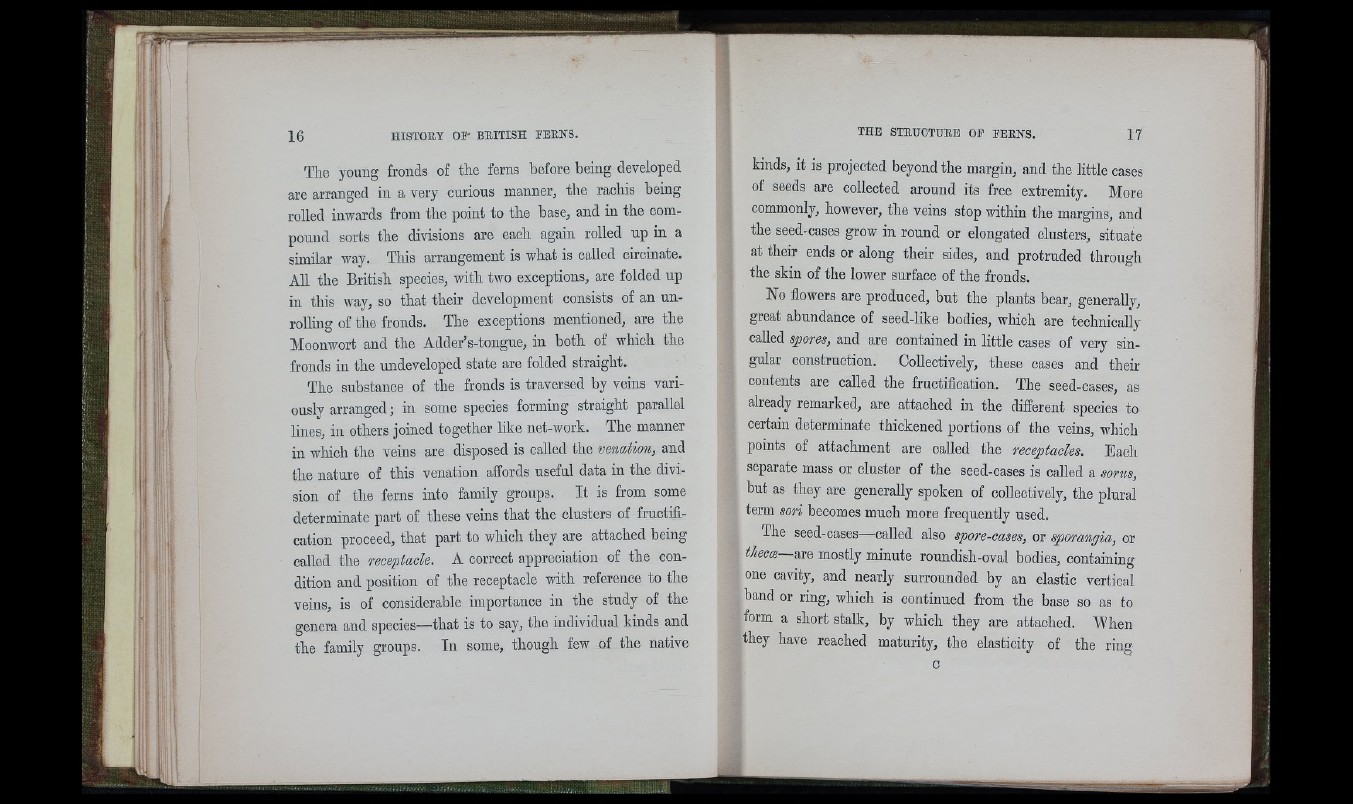
16 HISTORY OP- BRITISH PERNS.
I:) ’ f
; I
':i I
M I
u
1 ' ■(
i'r ■ ■ •
The young fronds of the ferns before being developed
are arranged in a very curious manner, the rachis being
rolled inwards from the point to the base, and in the compound
sorts the divisions are each again rolled up in a
similar way. Tins arrangement is what is called circinate.
A11 the British species, with two exceptions, are folded up
in this way, so that their development consists of an unrolling
of the fronds. The exceptions mentioned, are the
Moonwort and the Adder’s-tongue, in both of which the
fronds in the undeveloped state are folded straight.
The substance of the fronds is traversed by veins variously
arranged; in some species forming straight parallel
lines, in others joined together like net-work. The manner
in which the veins are disposed is called the venation, and
the nature of this venation affords useful data in the division
of the ferns into family groups. It is from some
determinate part of these veins that the clusters of fructification
proceed, that part to which they are attached being
called the receptacle. A correct appreciation of the condition
and position of the receptacle with reference to the
veins, is of considerable importance in the study of the
genera and species—that is to say, the individual kinds and
the family groups. In some, though few of the native
kinds, it is projected beyond the margin, and the little cases
of seeds are collected around its free extremity. More
commonly, however, the veins stop within the margins, and
the seed-cases grow in round or elongated clusters, situate
at their ends or along their sides, and protruded through
the skin of the lower surface of the fronds.
No flowers are produced, but the plants bear, generally,
great abundance of seed-like bodies, which are technically
called spores, and are contained in little cases of very singular
construction. Collectively, these cases and their
contents are called the fructification. The seed-cases, as
already remarked, are attached in the different species to
certain determinate thickened portions of the veins, which
points of attachment are called the receptacles. Each
separate mass or cluster of the seed-cases is called a sortis,
but as they are generally spoken of collectively, the plural
term sori becomes much more frequently used.
The seed-cases— called also spore-cases, or sporangia, or
Meece—are mostly minute roundish-oval bodies, containing
one cavity, and nearly surrounded by an elastic vertical
band or ring, which is continued from the base so as to
form a short stalk, by which they are attached. When
they have reached maturity, the elasticity of the ring
i 1